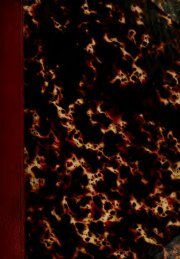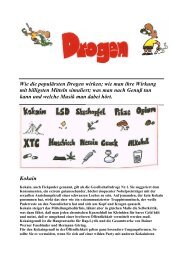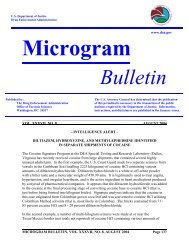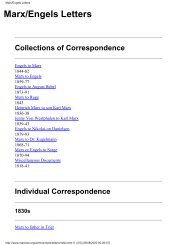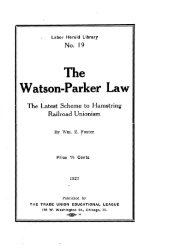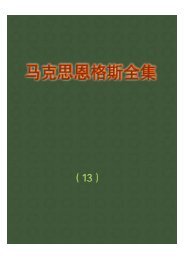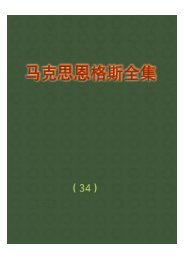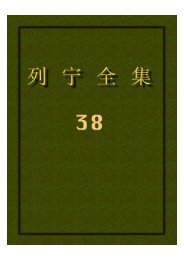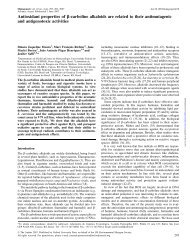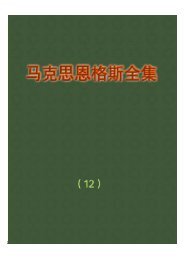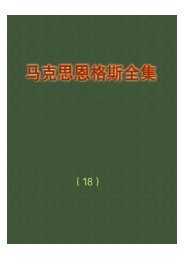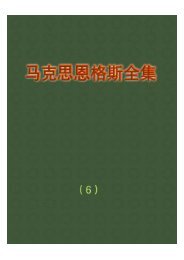Elfspice's Compleat Acacia Extraction Guide
Elfspice's Compleat Acacia Extraction Guide
Elfspice's Compleat Acacia Extraction Guide
You also want an ePaper? Increase the reach of your titles
YUMPU automatically turns print PDFs into web optimized ePapers that Google loves.
3. pH meter - In my opinion it is worth the money to get a good pH meter.<br />
These can be purchased from hydroponics shops and aquarium shops,<br />
they are commonly called 'pH Pens' or something similar. When getting a<br />
pH meter be sure to get an ample container of pH 7 'buffer' solution for<br />
calibrating it, and do this at least once a month. pH papers can be used,<br />
however the extract has a very dark reddish colour and stains the papers.<br />
The only type of paper test which is suitable is the type with four different<br />
tests on each strip, and the reason why I suggest using an electronic tester<br />
is that dollar for dollar, it is hard to see what the effective advantage is, for<br />
the cost of 400 strips one can have an electronic one, and the electronic<br />
testers are accurate (if calibrated correctly) to about ±0.05 pH units,<br />
though this is not critical, using precisely measured pH levels every time is<br />
helpful in generating consistent results as the exact pH levels influence<br />
solubilities of various constituents of the plant material, and the best<br />
policy is to try and pick a pH which dissolves what you want and as little of<br />
what you don't want. Bear in mind that every extraction requires about 10<br />
individual pH tests, thus for the same money as you can do 400<br />
extractions with paper tests, you can do well over 1000 with a pen.<br />
4. Large Jar - a jar like the ones that cranberry juice is sold in is perfectly<br />
suitable for the task, though a 2L canning jar can serve quite well also. If a<br />
canning jar is used, it should be tested with turpentine to ensure that the<br />
rubber used on the seal does not get damaged by it. The juice bottles also<br />
have the advantage of being able to rapidly vent, the clips on canning jars<br />
require much more time to open when venting. Shellite is safe to use with<br />
most common HDPE plastic bottles, but these bottles are unsuitable for<br />
use with aromatic solvents such as turpentine, xylene or toluene, which I<br />
suggest using. An empty turpentine bottle is suitable also. This is the<br />
container that the extractions and washes will be done in, so it needs to be<br />
as large as the quantities of material you work with, and the opening big<br />
enough to permit the use of the baster.<br />
5. Colander - to catch bulky fibrous material from the acidic extract.<br />
6. Strainer - This will catch the larger particles.<br />
7. Fine Strainer/Tea Strainer - this will catch medium sized particles,<br />
which will block the coffee filters.<br />
8. Cotton, Acrylic or Polyester felt - common pillow stuffing can be used<br />
here, so long as this is done before doing the Non polar washes. This<br />
material catches a lot of fine particles, it functions as a 'depth filter', which<br />
is a thick filter which is used to remove the majority of large and medium<br />
sized gunk before using filter papers. This kind of filter will also be helpful<br />
with the gunky gooey materials that are sometimes present.<br />
9. Coffee Filters - to filter finer particles out of the solution. Particles of<br />
bark will make seeing the line between phases in the Non polar wash<br />
difficult to see. The coffee filters can be good for removing hairs and other<br />
junk when recrystallising as well.<br />
10. Pyrex Measuring Jug - this is helpful with filtration and removing<br />
extract from broad containers (such as cooking pots) as well as measuring<br />
solvents for extraction and washing.



